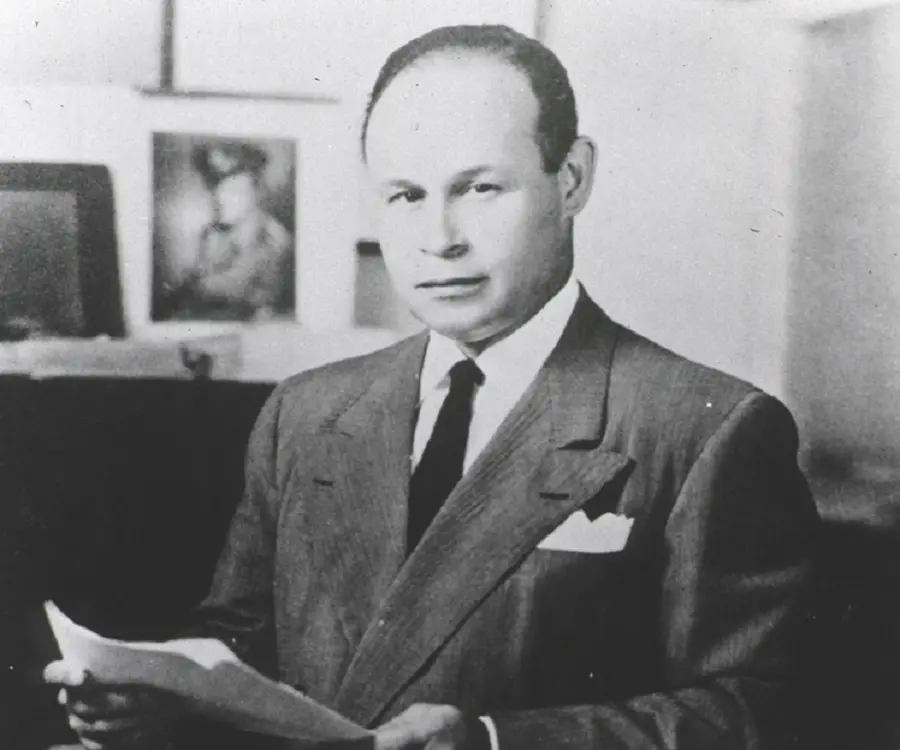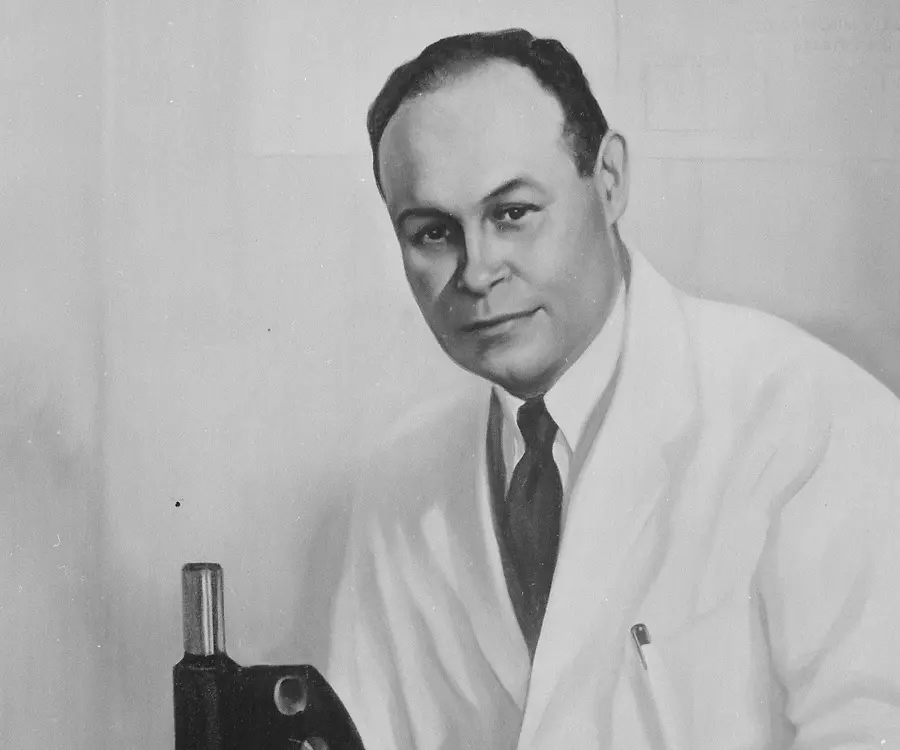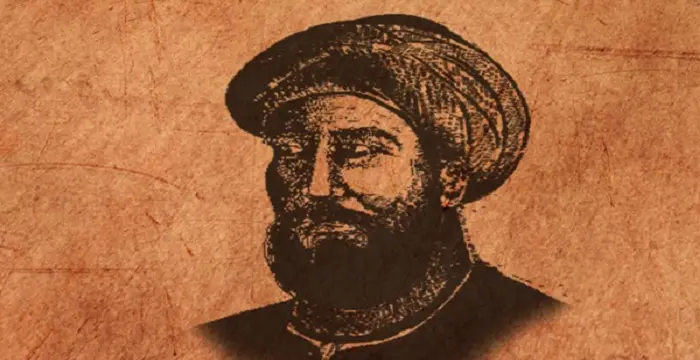
Charles R. Drew - Surgeons, Facts and Personal Life
Charles R. Drew's Personal Details
Charles R
| Information | Detail |
|---|---|
| Birthday | June 3, 1904 |
| Died on | April 1, 1950 |
| Nationality | American |
| Famous | Amherst College, Columbia University, Physicians, Surgeons, Physicians, Surgeons |
| Spouses | Minnie Lenore Robbins |
| Childrens | Charlene Drew Jarvis |
| Universities |
|
| Notable Alumnis |
|
| Discoveries / Inventions |
|
| Birth Place | Washington, D.C. |
| Gender | Male |
| Father | Richard Drew |
| Sun Sign | Gemini |
| Born in | Washington, D.C. |
| Famous as | Physician & Surgeon |
| Died at Age | 45 |
// Famous Physicians
Maria Montessori
Maria Montessori was a physician and educator who developed the approach of Montessori education. This biography of Maria Montessori provides detailed information about her childhood, life, achievements, works & timeline.
Severo Ochoa
Severo Ochoa was a Spanish physician and biochemist who won the 1959 Nobel Prize in Physiology or Medicine. Check out this biography to know about his childhood, life, achievements, works & timeline.
Virginia Apgar
Known for inventing a novel newborn scoring system, Virginia Apgar was a reputed Physician. Check out this biography to know about her childhood, family life, achievements and other facts related to her life.
Charles R. Drew's photo
Who is Charles R. Drew?
Charles Richard Drew was a famous American physician, surgeon and medical researcher. He is remembered for his outstanding innovations and researches on blood transfusions. His innovative techniques for better blood storage and researches in blood transfusion helped save thousands of lives during the World War II. His innovations revolutionized the medical profession and inspired many medical aspirants to follow his path. He was the director of ‘Blood for Britain’, the first blood bank project organized in the year 1940 to help British civilians and soldiers. He also served as director of the American Red Cross Blood Bank, which was established by him. Though he had an untimely death at the age of 46, his contributions had significant impact in the field of medicine, and provided a strong base for research on similar lines. Rightly referred to as the ‘Father of the blood bank’, this outstanding personality played a major role in organizing, conceiving and directing the first blood banking program in the history of America.
// Famous Surgeons
Joseph Lister
Joseph Lister was a British surgeon who was the founder of antiseptic medicine. This biography of Joseph Lister provides detailed information about his childhood, life, achievements, works & timeline.
Charles Brenton Huggins
Charles Huggins was a Canadian-born American physician, surgeon and physiologist who won the Nobel Prize for Physiology or Medicine in 1966. This biography provides detailed information about his childhood, life, research, achievements & timeline.
Guy De Chauliac
Chauliac was one of the most distinguished surgeons of the early medieval period. Read on to know more on his childhood, life and timeline in this biography.
Childhood & Early Life
Charles Richard Drew was born on June 3, 1904 in Washington D.C in a middle class African-American family to Richard who was a carpet layer and Nora Burrell who was a teacher.
He was the eldest amongst his siblings and grew up in DC’s Foggy Bottom neighborhood.
He had keen interest in athletics and won many medals for swimming in his early years. Later, he switched to basketball, football and other sports. In 1922 he did his graduation from Dunbar High School. After his graduation he got a sports scholarship and went to Amherst College in Massachusetts and graduated from here in 1926.
Due to lack of funds he was not able to enroll himself at the medical college. He worked as a biology teacher and a coach in Morgan College (Morgan State University, Baltimore) till 1928. He also became a part of Omega Psi Phi fraternity.
In 1928 he applied to medical schools and got through at McGill University in Montreal, Canada. He was awarded a prize in neuroanatomy and was also a part of Alpha Omega Alpha, which is a medical honor society.
In 1933, he received his MD degree and also a Master of Surgery degree. He stood 2nd in a class of 127 students.
He then did his residency and internship at Montreal general Hospital and Royal Victoria Hospital respectively. It was here when he met Dr John Beattie with whom he examined issues and problems pertaining to blood transfusions.
In 1935, soon after his father left for heavenly abode, he returned to the United States and joined Howard University’s Medical School as an instructor. He did a surgery residence at Freedmen’s Hospital, the following year in Washington D.C.
Career
In 1938, he received Rockefeller Fellowship and went to Columbia University for further studies and received his training at Presbyterian Hospital situated in New York City. It was here that he resumed his exploration of blood related matters in collaboration with John Scudder.
He was able to start a method of processing and preserving blood plasma or blood without cells. When plasma is separated from whole blood it can be banked for a longer period of time. He was able to derive a technique by way of which plasma could be dried and remolded as per requirement.
In 1940 he received his doctorate degree with his research “Banked Blood” serving as his doctorate thesis. He graduated at Columbia University and gained his degree in Doctor of Medical Science thus becoming the very first African-American to accomplish this.
In 1941 he became the first African-American surgeon who was selected to serve as an examiner on the American Board of Surgery. He later became a chief surgeon.
Great Britain Blood Plasma Project
In the late 1940s, John Scudder recruited him to help him set up and administer the program for blood storage and its preservation. This was before US entered the World War II and Drew had just gained his doctorate.
Under the project, he was to collect, test and transport large blood plasma quantities that were meant to be distributed in Great Britain. He travelled to New York to lead United States’ “Blood for Britain” project that was meant to aid civilians and British soldiers by providing U.S. blood to the United Kingdom.
Blood collection process was centralized by him where donors could donate blood. Each sample was tested before it was shipped. He took every possible measure to avoid poor handling and contamination of blood plasma. He closely monitored the shipments of these life-saving plasmas to treat war casualties.
For five months, “Blood for Britain” project ran successfully with approximately 15000 people turning donors and approximately 5,000 vials of blood plasma collected.
Personal Life & Legacy
In 1939, he married Minnie Lenore Robbins. She was a home economics professor at Spelman College. They were blessed with three daughters and a son. His daughter Charlene Drew Jarvis served as the President of Southeastern University from 1996-2009.
Drew died on April 1, 1950, as a result of a car crash. He along with three other physicians was heading for Tuskegee Institute in Alabama to attend a conference. Drew was driving the car which lost control and crashed near Burlington, North Carolina. The three other physicians escaped with minor injuries but Drew who was severely injured, succumbed to his injuries within half an hour after being attended at Almance General Hospital in Burlington, North Carolina.
His funeral took place at the Nineteenth Street Baptist Church in Washington, D.C. on April 5, 1950.
A popular myth regarding his death has been that he was refused a blood transfusion because of his skin color. This rumor spread like fire as in those days it was quite common to refuse treatment to blacks as the hospitals didn’t possess enough “Negro beds”.
Drew received several posthumous honors. There are many schools and medical institutions that have been named after Dr Drew.
In 1981, a postal stamp was issued by the United States Postal Services in its Great Americans Series to honor Drew.
A dry cargo ship of the United States Navy has been named USNS Charles Drew.
In 2002, Drew was listed as one of the 200 Greatest African Americans by Molefi Kete Asante.
In 1966 a school was incorporated in California and that was named Charles R. Drew Postgraduate Medical School, which later became the Charles R. Drew University of Medicine and Science.
Many medical colleges and schools have been named after him to honor his contribution.
// Famous Columbia University
Helen Morris
Helen Morris is a former book editor, TV producer and the wife of Academy Award winning director Martin Scorsese. Check out this biography to know about her birthday, childhood, family life, achievements and fun facts about her.
Simon Kuznets
Simon Kuznets was a noted Russian-American economist, statistician, demographer, and economic historian. Check out this biography to know about his childhood, family life, achievements and other facts related to his life.
Anna Paquin
Anna Paquin is a Kiwi film, theatre and television actress known for her roles in movies like ‘The Piano’, ‘Fly Away Home’, and ‘X-Men. This biography provides detailed information about her childhood, life, achievements, works & timeline.
Charles R. Drew's awards
| Year | Name | Award |
|---|---|---|
Other | ||
| 0 | Spingarn Medal | |
Charles R. Drew biography timelines
- // 3rd Jun 1904Charles Richard Drew was born on June 3, 1904 in Washington D.C in a middle class African-American family to Richard who was a carpet layer and Nora Burrell who was a teacher.
- // 1922 To 1926He had keen interest in athletics and won many medals for swimming in his early years. Later, he switched to basketball, football and other sports. In 1922 he did his graduation from Dunbar High School. After his graduation he got a sports scholarship and went to Amherst College in Massachusetts and graduated from here in 1926.
- // 1928Due to lack of funds he was not able to enroll himself at the medical college. He worked as a biology teacher and a coach in Morgan College (Morgan State University, Baltimore) till 1928. He also became a part of Omega Psi Phi fraternity.
- // 1928In 1928 he applied to medical schools and got through at McGill University in Montreal, Canada. He was awarded a prize in neuroanatomy and was also a part of Alpha Omega Alpha, which is a medical honor society.
- // 1933In 1933, he received his MD degree and also a Master of Surgery degree. He stood 2nd in a class of 127 students.
- // 1935In 1935, soon after his father left for heavenly abode, he returned to the United States and joined Howard University’s Medical School as an instructor. He did a surgery residence at Freedmen’s Hospital, the following year in Washington D.C.
- // 1938In 1938, he received Rockefeller Fellowship and went to Columbia University for further studies and received his training at Presbyterian Hospital situated in New York City. It was here that he resumed his exploration of blood related matters in collaboration with John Scudder.
- // 1940In 1940 he received his doctorate degree with his research “Banked Blood” serving as his doctorate thesis. He graduated at Columbia University and gained his degree in Doctor of Medical Science thus becoming the very first African-American to accomplish this.
- // 1941In 1941 he became the first African-American surgeon who was selected to serve as an examiner on the American Board of Surgery. He later became a chief surgeon.
- // 1st Apr 1950Drew died on April 1, 1950, as a result of a car crash. He along with three other physicians was heading for Tuskegee Institute in Alabama to attend a conference. Drew was driving the car which lost control and crashed near Burlington, North Carolina. The three other physicians escaped with minor injuries but Drew who was severely injured, succumbed to his injuries within half an hour after being attended at Almance General Hospital in Burlington, North Carolina.
- // 5th Apr 1950His funeral took place at the Nineteenth Street Baptist Church in Washington, D.C. on April 5, 1950.
- // 1966In 1966 a school was incorporated in California and that was named Charles R. Drew Postgraduate Medical School, which later became the Charles R. Drew University of Medicine and Science.
- // 1981In 1981, a postal stamp was issued by the United States Postal Services in its Great Americans Series to honor Drew.
- // 2002In 2002, Drew was listed as one of the 200 Greatest African Americans by Molefi Kete Asante.
// Famous Physicians
Al-Zahrawi
Al-Zahrawi, was an illustrious medieval Arab Muslim physician and surgeon. Check out this biography to know about his childhood, family life, achievements and interesting facts about him.
Jabir Ibn Hayyan
Jabir Ibn Hayyan was a medieval era polymath. Check out this biography to know about his life, works and achievements.
Maria Montessori
Maria Montessori was a physician and educator who developed the approach of Montessori education. This biography of Maria Montessori provides detailed information about her childhood, life, achievements, works & timeline.
Mae Jemison
Mae Carol Jemison is a famous American astronaut who became the first African American astronaut to travel to space. To know more about her childhood, career, profile and timeline read on
Paul Farmer
Paul Farmer is an anthropologist and physician who co-founded the health organization - Partners In Health (PIH). This biography of Paul Farmer provides detailed information about his childhood, life, achievements, works & timeline.
Jean Piaget
Jean Piaget was a psychologist and philosopher known for his theory of cognitive development. This biography of Jean Piaget provides detailed information about his childhood, life, achievements, works & timeline.
Charles R. Drew's FAQ
What is Charles R. Drew birthday?
Charles R. Drew was born at 1904-06-03
When was Charles R. Drew died?
Charles R. Drew was died at 1950-04-01
Where was Charles R. Drew died?
Charles R. Drew was died in Burlington
Which age was Charles R. Drew died?
Charles R. Drew was died at age 45
Where is Charles R. Drew's birth place?
Charles R. Drew was born in Washington, D.C.
What is Charles R. Drew nationalities?
Charles R. Drew's nationalities is American
Who is Charles R. Drew spouses?
Charles R. Drew's spouses is Minnie Lenore Robbins
Who is Charles R. Drew childrens?
Charles R. Drew's childrens is Charlene Drew Jarvis
What was Charles R. Drew universities?
Charles R. Drew studied at Amherst College,Columbia University, Amherst College, Columbia University, McGill University, Dunbar High School, McGill University Faculty of Medicine
What was Charles R. Drew notable alumnis?
Charles R. Drew's notable alumnis is Amherst College, Columbia University
What is Charles R. Drew's inventions/discoveries?
Blood Banking; Blood Transfusions was invented (or discovered) by Charles R. Drew
Who is Charles R. Drew's father?
Charles R. Drew's father is Richard Drew
What is Charles R. Drew's sun sign?
Charles R. Drew is Gemini
How famous is Charles R. Drew?
Charles R. Drew is famouse as Physician & Surgeon
















